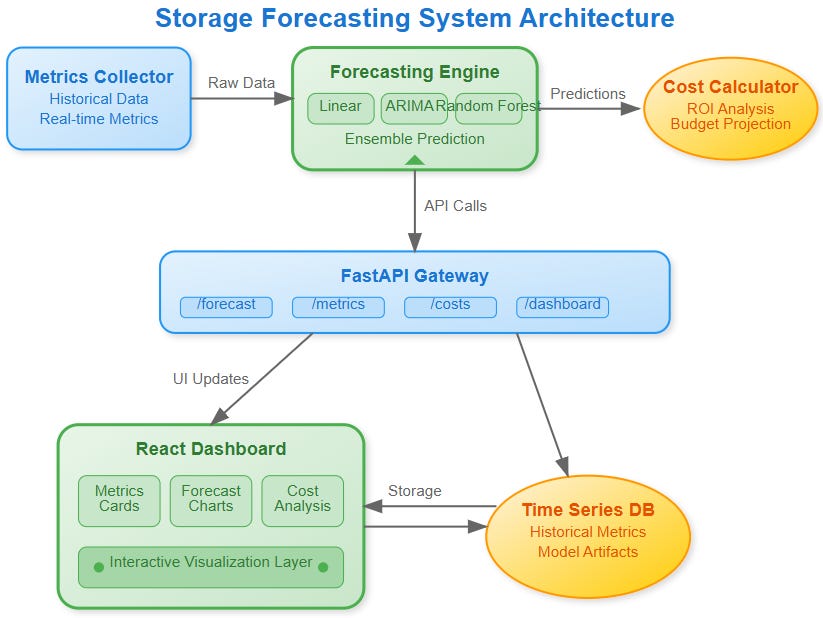Day 118: Storage Usage Forecasting - Predicting the Future of Your Log Data
What We’re Building Today
Today we’re implementing an intelligent storage forecasting system that predicts your log platform’s future storage needs. Think of it as your distributed system’s crystal ball - analyzing historical patterns to forecast when you’ll need more storage, how much it’ll cost, and when to scale.
High-Level Components:
Historical Data Collector: Gathers storage metrics across all nodes
Forecasting Engine: Applies machine learning models for predictions
Cost Calculator: Projects future expenses and ROI scenarios
Capacity Planner: Recommends optimal scaling strategies
Interactive Dashboard: Visualizes trends and actionable insights
Understanding Time Series Forecasting in Storage Systems
Storage usage patterns follow predictable trends. Weekly peaks during business hours, monthly spikes during reporting periods, seasonal variations. Our forecasting engine uses multiple algorithms to capture these patterns.
Linear Regression captures steady growth trends in data volume. If your storage grows consistently by 2% per week, linear regression identifies this pattern and projects it forward.
Exponential Smoothing handles seasonal patterns and noise reduction. It gives more weight to recent observations while smoothing out random fluctuations.
ARIMA Models address complex time dependencies and cyclical behaviors. ARIMA excels when your data has trends, seasonality, and autocorrelation.
Capacity Planning Strategy
Unlike reactive scaling that responds to current load, predictive planning anticipates future needs. This prevents performance degradation and optimizes cost efficiency by scheduling capacity increases during low-cost periods.
Cost Optimization Framework
Storage costs compound across multiple dimensions: raw capacity, replication overhead, backup retention, and cross-region transfers. Our system models these interdependencies to provide accurate total cost of ownership projections.
Real-World Application
Netflix’s content delivery system forecasts storage needs for their global catalog, predicting when regional data centers require capacity expansion. Similarly, Uber’s trip data requires forecasting to handle surge patterns across different geographical markets.



